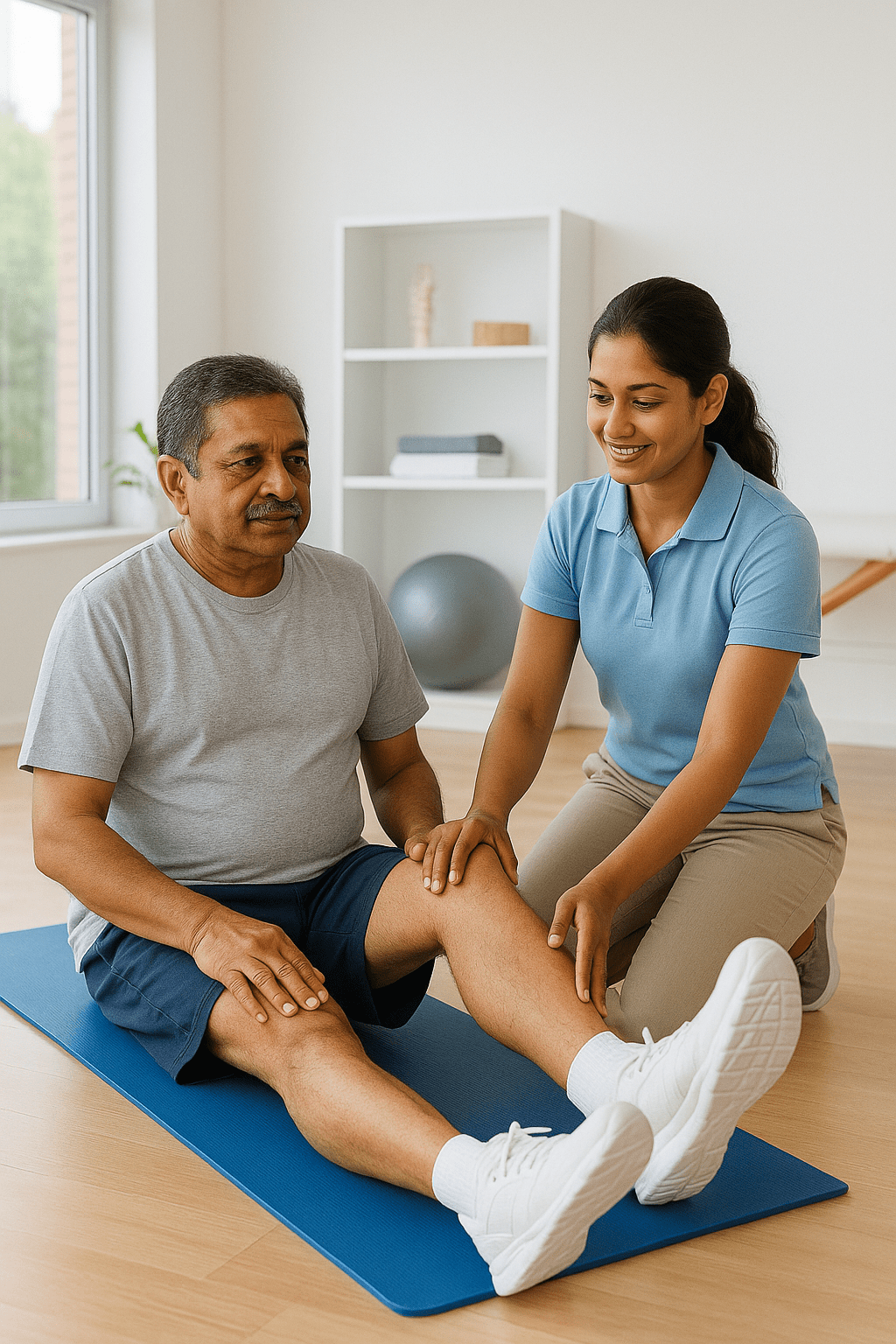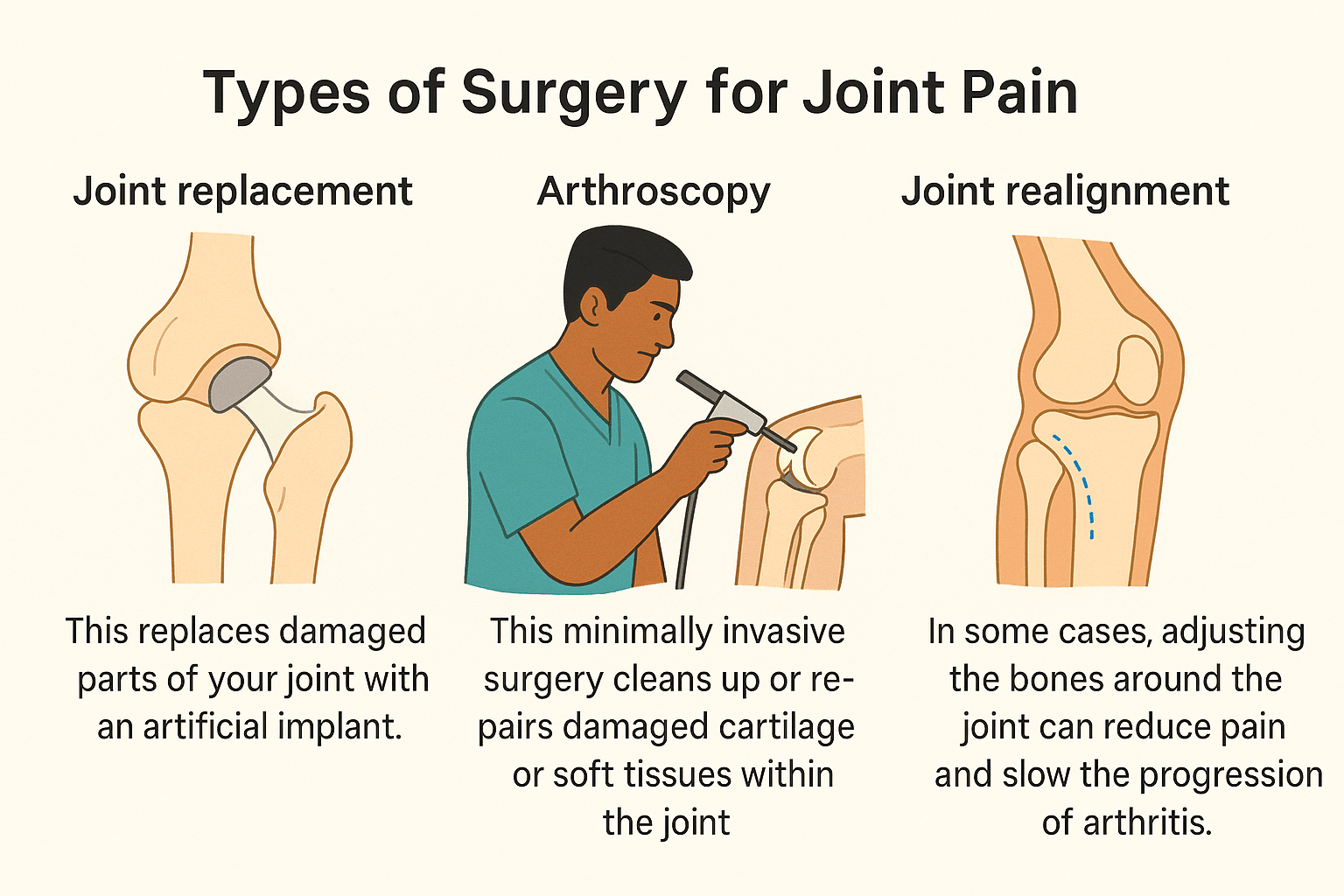How to Avoid Surgery for Joint Pain – And When It’s Necessary

Joint pain can be a frustrating and life-altering experience, affecting everything from your daily routine to your overall happiness. As an orthopaedic specialist, I understand how many people fear surgery and want to avoid it if possible. While surgery is sometimes the best option, there are often many things you can try first to reduce pain and improve mobility.
Let’s explore the best ways to avoid surgery for joint pain—and how to recognise when it’s time to consider it.
Why Avoiding Surgery is Often the First Step

Surgery is a significant step, and although today’s surgical techniques are more advanced than ever, they still come with risks and require a period of recovery. For many patients, especially those in the early stages of joint pain, it’s worth exploring non-surgical treatments first.
Non-surgical treatments can be incredibly effective at easing discomfort and maintaining your independence. Here’s what I usually recommend:
Physiotherapy – A carefully designed programme can strengthen the muscles around your joints, improving stability and reducing pain.
Medication – Anti-inflammatory drugs and painkillers can help control symptoms, especially during flare-ups.
Weight management – Losing even a small amount of weight can take considerable pressure off your joints, making a big difference in pain and mobility.
Activity modification – Avoiding activities that worsen pain can reduce stress on your joints.
Assistive devices – Braces, supportive footwear, or walking aids can help reduce strain on painful joints.

The Power of Lifestyle Changes
Small daily choices can have a significant impact on joint pain and overall health. Incorporating these habits can help delay surgery and keep your joints healthier for longer:
Stay active – Low-impact exercises such as swimming, cycling, or walking can keep joints mobile and muscles strong without causing unnecessary strain.
Healthy diet – Eating a balanced diet that includes anti-inflammatory foods like leafy greens, berries, and omega-3-rich fish can support joint health.
Listen to your body – Pay attention to warning signs like pain, swelling, or stiffness, and rest when needed.
Good posture – Simple changes to how you stand and sit can take pressure off your joints and reduce pain.
When Joint Surgery Becomes Necessary
Despite our best efforts, there are times when surgery is the best or only option. Deciding when to move from conservative treatments to surgical solutions can be challenging, but there are clear signs:
Severe, constant pain – When joint pain dominates your life and does not respond to medication, physiotherapy, or lifestyle changes, it’s time to consider surgery.
Loss of function – If your pain is stopping you from walking, climbing stairs, or even doing simple daily tasks like getting out of bed, this suggests more advanced damage.
Joint damage visible on scans – X-rays and MRI scans can reveal how much cartilage has worn away or how misaligned your joint has become.
Quality of life has fallen – If you’re no longer able to enjoy your hobbies or social activities, it may be time to act.
Other treatments have failed – When everything else has been tried without success, surgery might be the next step.
Types of Surgery for Joint Pain

Surgery isn’t always about replacing the joint entirely. Depending on your condition, you may be offered:
Joint replacement – This replaces damaged parts of your joint with an artificial implant. It’s common for hips and knees, and can restore mobility for many years.
Arthroscopy – This minimally invasive surgery cleans up or repairs damaged cartilage or soft tissues within the joint.
Joint realignment – In some cases, adjusting the bones around the joint can reduce pain and slow the progression of arthritis.
What to Expect After Surgery
If surgery becomes necessary, knowing what to expect can help reduce anxiety:
Recovery time – Full recovery from joint replacement usually takes three to six months, though you’ll start moving soon after surgery.
Physiotherapy is essential – Exercises and stretches help you regain strength and mobility, ensuring the best outcome.
Modern implants last longer – Today’s knee and hip replacements can last 15–20 years or more, giving many people decades of pain relief.

My Approach: Patience and Precision

In my practice, I always remind patients:
“We aim to delay surgery for as long as possible. But when pain dominates your life and you can’t think about anything else, surgery can give you your independence back.”
It’s about finding the right balance—supporting your joints with non-surgical treatments for as long as possible, while still recognising when it’s time to move forward with surgery.
Joint pain doesn’t have to control your life. By making small lifestyle changes, working closely with your Orthopaedic doctor, and exploring all available treatments, you can often delay or avoid surgery. And if surgery does become necessary, remember that it’s an opportunity to regain mobility and improve your quality of life.
“Your joints carry you through life. Don’t let pain hold you back from living it fully.”
If joint pain is stopping you from doing the things you love, don’t wait. Let’s talk about your symptoms and your goals. Together, we can create a plan that’s right for you—whether that means avoiding surgery or knowing exactly when to consider it.
Book your appointment today and take the first step towards a life with less pain and more freedom.